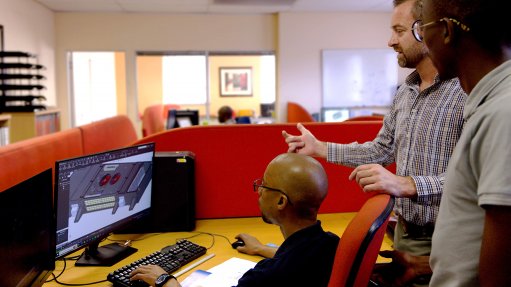
Booyco Engineering custom designs HVAC solutions for the defence sector
South Africa-based Booyco Engineering has upgraded the heating, ventilation and air conditioning (HVAC) system for a latest-generation armoured personnel carrier.
Booyco Engineering executive director Grant Miller says the latest prototype has been updated with an integrated electronic control system and the addition of heating functionality.
“This version of the unit allows the driver two-way engagement with HVAC related information on the vehicle’s touchscreen dashboard consol, rather than via a standalone control panel,” says Miller. Using a controller area network-, or CAN bus-, enabled controller, the HVAC’s control system is now fully integrated into the vehicle’s control communication network. The unit uses a micro-processor controller that was locally developed specifically for HVAC applications in military vehicles. The addition of heating to the system means that the vehicle can now be deployed in areas with colder climates.
Designed and manufactured in South Africa, the HVAC system is said to be fully rated to military standards, including environmental specifications on electromagnetic conformance and interference, and on general human engineering design.
The company says this is the third iteration of a bespoke unit designed for a long-standing export customer who is also developing a hybrid electric-drive version of the same vehicle, in which the batteries will also require cooling.
“They intend to use our HVAC system for their new hybrid vehicle, where our equipment will be cooling not just the internal crew space but the batteries as well,” says Booyco Engineering engineering manager Ross Macphail. The large traction motor batteries on electric vehicles need to be actively cooled during operation.
Macphail points out that this system also makes use of brushless DC compressors as opposed to a traditional engine driven compressor, which allows the HVAC system to be run independently of the vehicle engine.
The HVAC equipment is designed to perform reliably in the high levels of shock, vibration and dust encountered in military applications. It also limits electromagnetic interference (EMI), which is unwanted electrical noise radiated and conducted from the equipment during operation. This aspect is particularly important in a military context, where EMI can negatively affect communication and other electronic equipment in the vehicle.